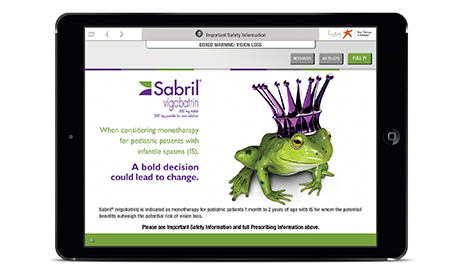Scout Marketing’s executive vice president, Raffi Siyahian describes 2013 as a year of organic growth, which he credits to the company’s stake—and investment—in specialty pharma companies.
“We know that those folks have to cut through the clutter and do things a little bit differently to get noticed with their brands and they have to be a little more efficient,” Siyahian explains. “That’s where we specialize and where we have a lot of experiential background . They need to get noticed relative to the brand they’re dealing with when they’re up against the Pfizers and Mercks of the world.
“We put our flag there a while ago and that’s where we’ve been focused,” he adds. “It’s worked out well for us.” And the agency’s growth this year stands by that assertion—Scout reported 15% growth for 2013.
The agency’s growth was fueled by additional work for Lundbeck in its epilepsy franchise and the agency was awarded HCP business for Jazz’s Xyrem, a treatment for narcolepsy that reduces excessive daytime sleepiness (EDS). The agency also added Nielsen Biosciences, a diagnostics company, to its portfolio this year.
Siyahian sees all of the growth as part of a coming trend. “Our plan is to do a lot more of the same, investing back in the agency and its growth,” he offers. “We’re moving our Chicago office as well as our San Digeo office.” Both offices are headed to larger spaces.
Real estate hasn’t been their only investment, however. “Seven to eight years ago we made a commitment that we were going to get top-level talent in the digital space and that’s where we’ve focused quite a bit.”
That’s an area of investment that the agency may have overcommitted on, he says, laughing, “The truth of the matter is we have far more digital horsepower than most pharmaceutical companies would ever take advantage of because they’re concerned about FDA regulations.”
Even so, Siyahian says that those resources have proven to be “a big differentiator for us at Scout. Some agencies say they have digital capabilities but then what they do is outsource the programming and planning. All of our resources are in-house because we made a commitment to do so. It’s the way of the world now.”
And while digital may be the way of the world, savvy marketers are finding that digital for digital’s sake is no longer the avenue of approach, and tailoring these tools to strategy is the new right of way.
“It’s not just the typical iPad app that the sales rep carries around. What we’re able to do now is get deep in the analytics behind the interaction,” Siyahian shares. “We’re able to apply a lot of analytics and develop customized platforms.”
Social media, too, has followed that trend of requiring a more nuanced approach. “We’re doing some work [in social media], but not as much as we’re proposing. A lot of it is disease awareness and fostering discussions for our clients. We’ve found that most companies are far more comfortable doing disease awareness as opposed to brand awareness.”
As for the future, Siyahian says they hope to continue to fill out the agency’s roster—a task he hopes won’t prove too difficult, due to the agency’s attractive culture. “We’re not interested in creating a sweatshop, we’re not interested in people marathon chair warming,” he says. “We don’t think that you get the best people or the best type of work that way. We want to hire talented people who work efficiently.”
From the July 01, 2014 Issue of MM+M - Medical Marketing and Media








